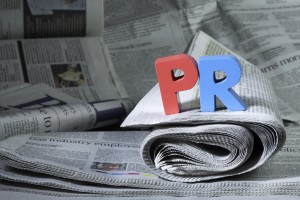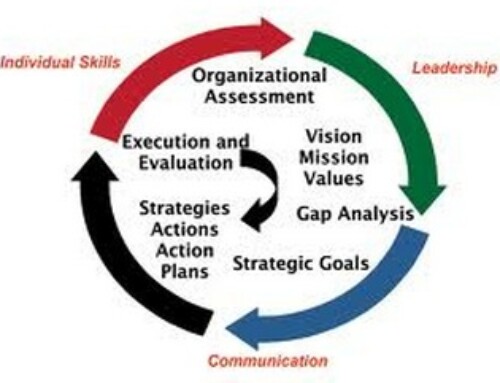 One of the tools in the Public Relations’ publicity toolkit to communicate for decades has been a paid newswire. PR Newswire and Business Wire early on dominated the business in the U.S. What people don’t realize is that the reason one used a paid newswire has evolved with technology and our times.
One of the tools in the Public Relations’ publicity toolkit to communicate for decades has been a paid newswire. PR Newswire and Business Wire early on dominated the business in the U.S. What people don’t realize is that the reason one used a paid newswire has evolved with technology and our times.
Initially, the popularity of newswires was fueled by federal regulations that required public companies to meet specific disclosure laws. With the digitization of news and the expansion of the Internet, firms like Marketwire and PRWeb emerged (and much later, GlobeNewswire), and so did the value proposition of newswires. Technology firms became the client of these more Internet-focused firms, and the value proposition became SEO.
Newswires Today
Today, that’s all changed, and so has the competitive landscape for newswire firms. Dozens of online newswire companies offer deeply discounted services that promise to propagate one’s news release to hundreds and sometimes thousands of promised online sources. Many still tout SEO as the end game.
But Google long killed any SEO value of news releases when its algorithm penalized sites that ran duplicative content. That’s why PR people have to explain to clients why links often disappear on websites after 48 hours. Even for clients who paid PR Newswire’s full-rate of $1900 or more for a 1,270-word news release tomb – poof! – the link that was once their featuring their full news release on that NBC New York TV affiliate is gone, forever.
That said, some links do not get deleted. You can socialize these links as people see them as credible third-party sources. Fortunately, these links tend to be by far, the most valuable ones, including Yahoo!
Impact on Pricing
The pricing in news releases is collapsing. This is according to the sales reps I’ve spoken with at some of the big newswire firms. I believe it’s happening for two reasons. First, the major wire services are grossly over-priced on their published rates versus what people can negotiate in contact rates. Second, the effectiveness of online pickup, even with disappearing links, is diminishing.
News websites are getting smarter, and they are not picking up everything. They are picking up the better-quality content. Well-written news releases it seems, are the ones earning the Yahoo! links more consistently these days. Crappy, run of the mill announcements just aren’t cutting it, no matter what you spend.
Are Paid Newswires Still Worth It?
The real question clients want to know is “Are they worth it?” The answer is still, “Oh God, yes.” But not for SEO. The reason one uses a newswire today is for other purposes. The most important one: to establish a digital footprint.
Every company, every product, every service, every individual leader has a story to tell. You need to share your story the way you want, or someone else will tell it their way. That’s how it will get it established as part of your digital footprint. It is your best chance of your story being told the right way in the future.
Creating a digital footprint is something many people just don’t understand. But it is simple to illustrate. Just Google your firm’s name. If the results yield the kind of information that accurately reflects who you are – and not Glassdoor and Google ratings that give you one-and-a-half-stars – than you’ve done an excellent job. Most firms that have done well will also find the results of the PR efforts within the first two pages of their Google results.
Using a paid newswire to help build your digital footprint is not a one-and-done proposition. Creating a steady and regular cadence of news is what helps you accomplish that. Besides, you generate news releases for many more reasons than just putting it on a paid newswire. That’s an entirely different topic.
Immediate Leveraging
What a paid newswire also does is help you immediately socialize your news. That Yahoo! link or MarketWatch that’s part of the Wall Street Journal can be worth its weight in gold on Twitter, Facebook or LinkedIn. A journalist may cringe at this point, but to the typical reader out there, that link appears as third-party credibility. That’s 10x the value of an advertisement.
You are going to get that Yahoo! link within the first ten to sixty minutes after it appears on the newswire. That means you are going to be able to link that to social media immediately. You can then time your social media blitz because you can schedule when your paid newswire will run.
That makes the money you spend on a newswire yield an enormous ROI. Not just from the 48-hour exposure to the eyeballs that see it – which often produces a publicity value of $10,000 to $30,000 in our experience, according to Cision estimates. But from the additional targeted exposure you can get from using these links in social media.
Until we see these things change, it is still game on for newswires when it comes to a smart PR strategy, especially if you don’t have the right digital footprint.





I still get and use PR Newswire and one other. Cision is king. Long live the king – And you and me too!!!
The “link bomb” that comes from a press release can destroy your rankings if you use follow links. They can be beneficial, as a long term strategy, if used as “mentions” of your brand and you insist on all links being nofollow.
Excellent suggestion Dean and something few people in PR realize. Thanks for sharing.